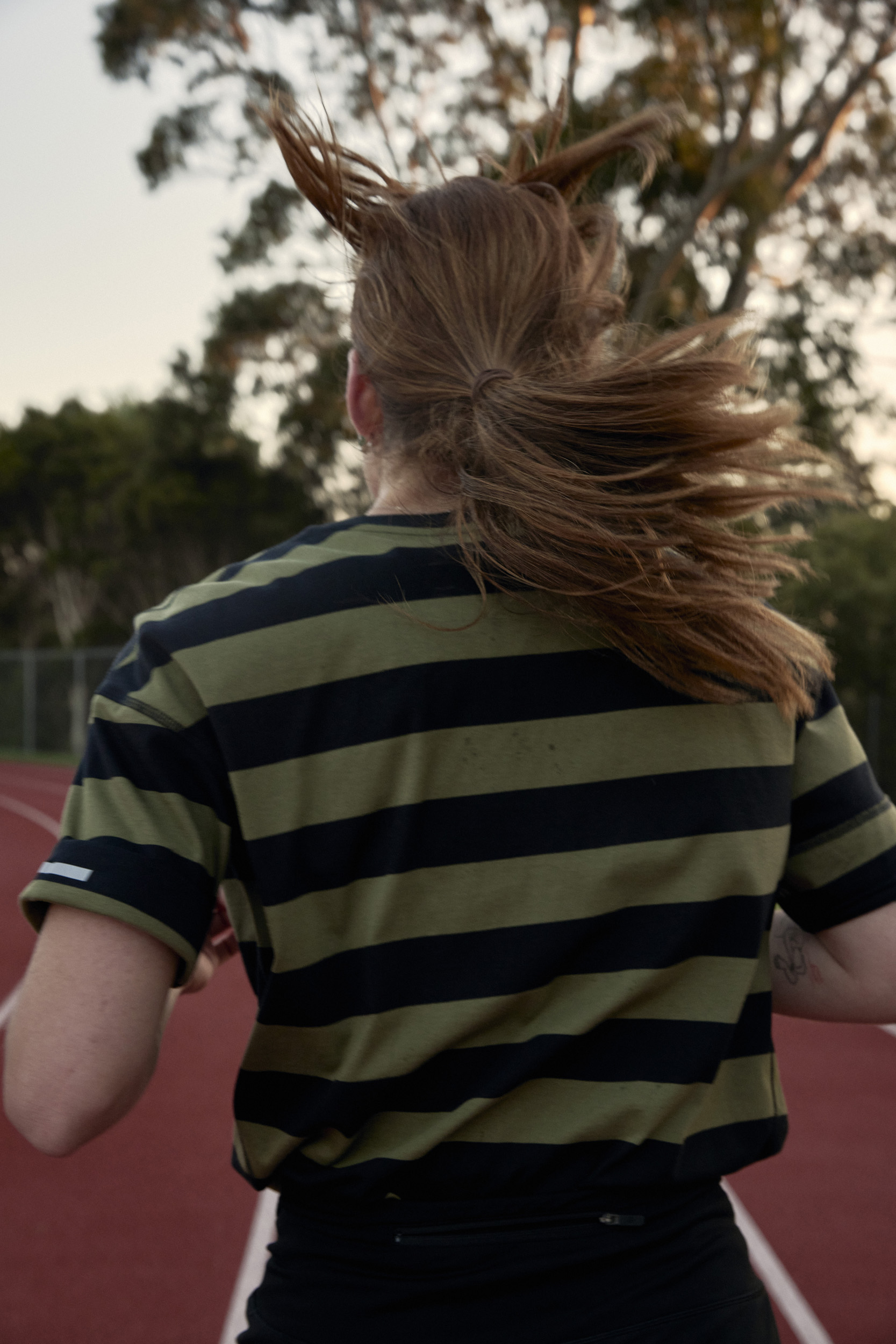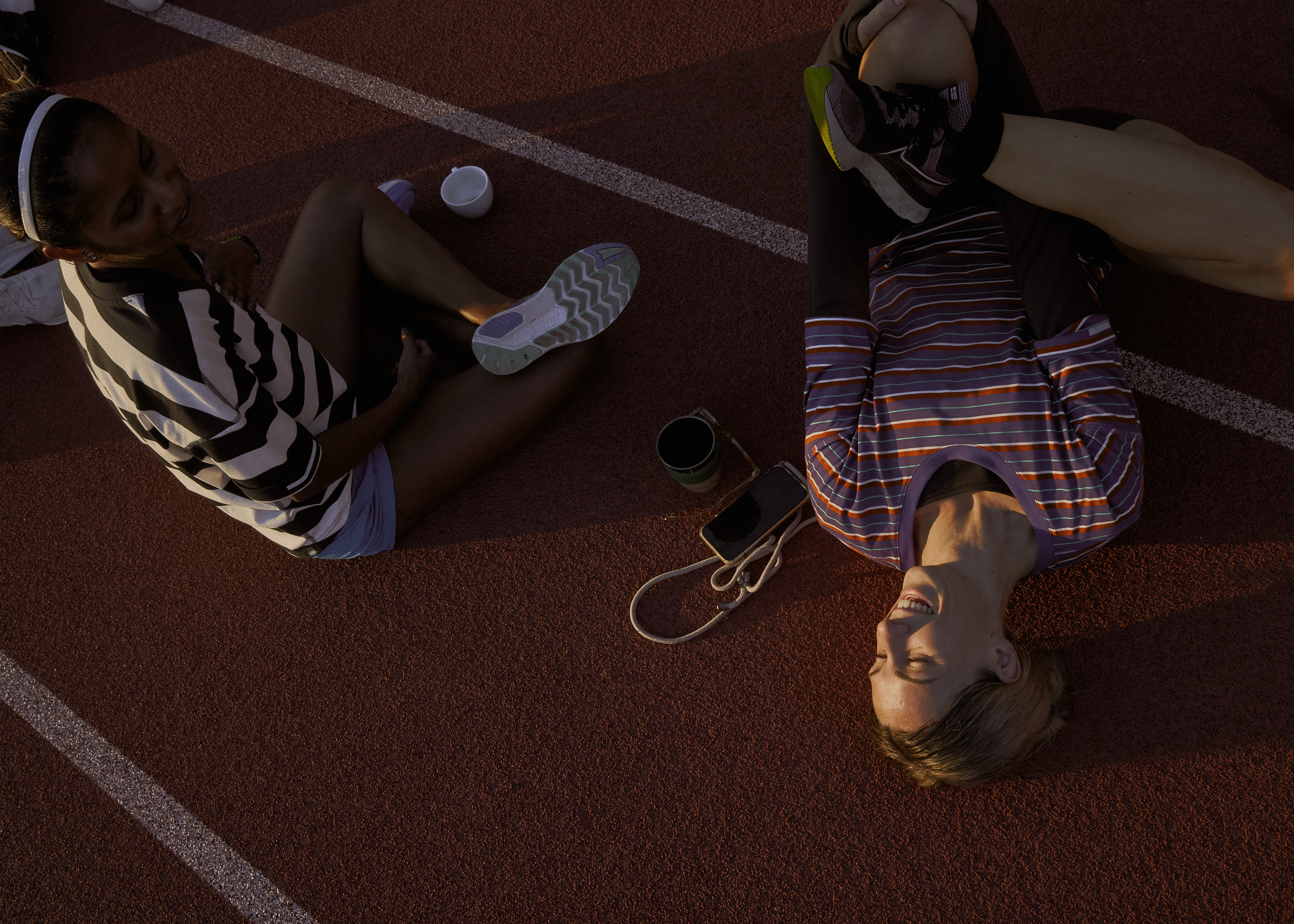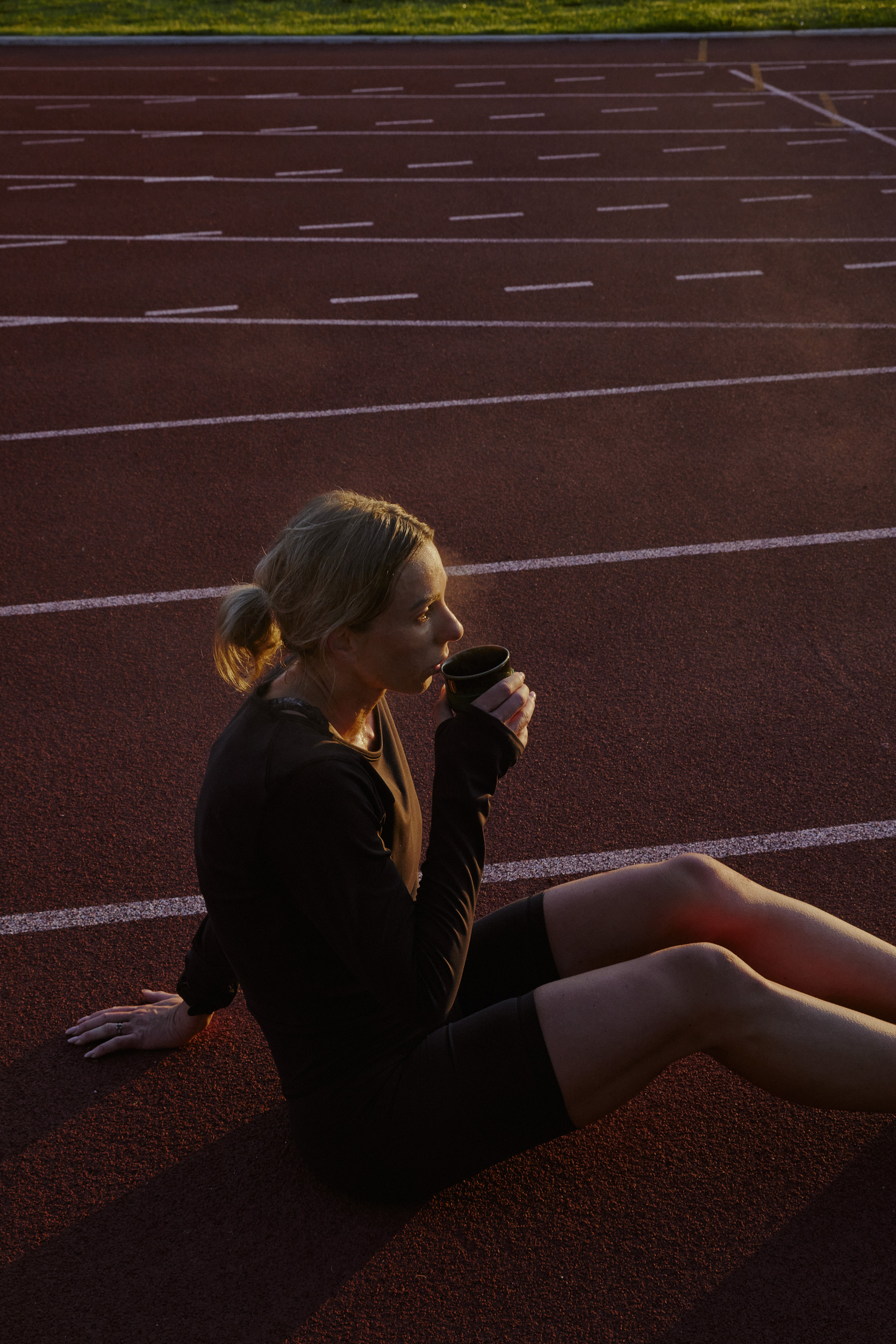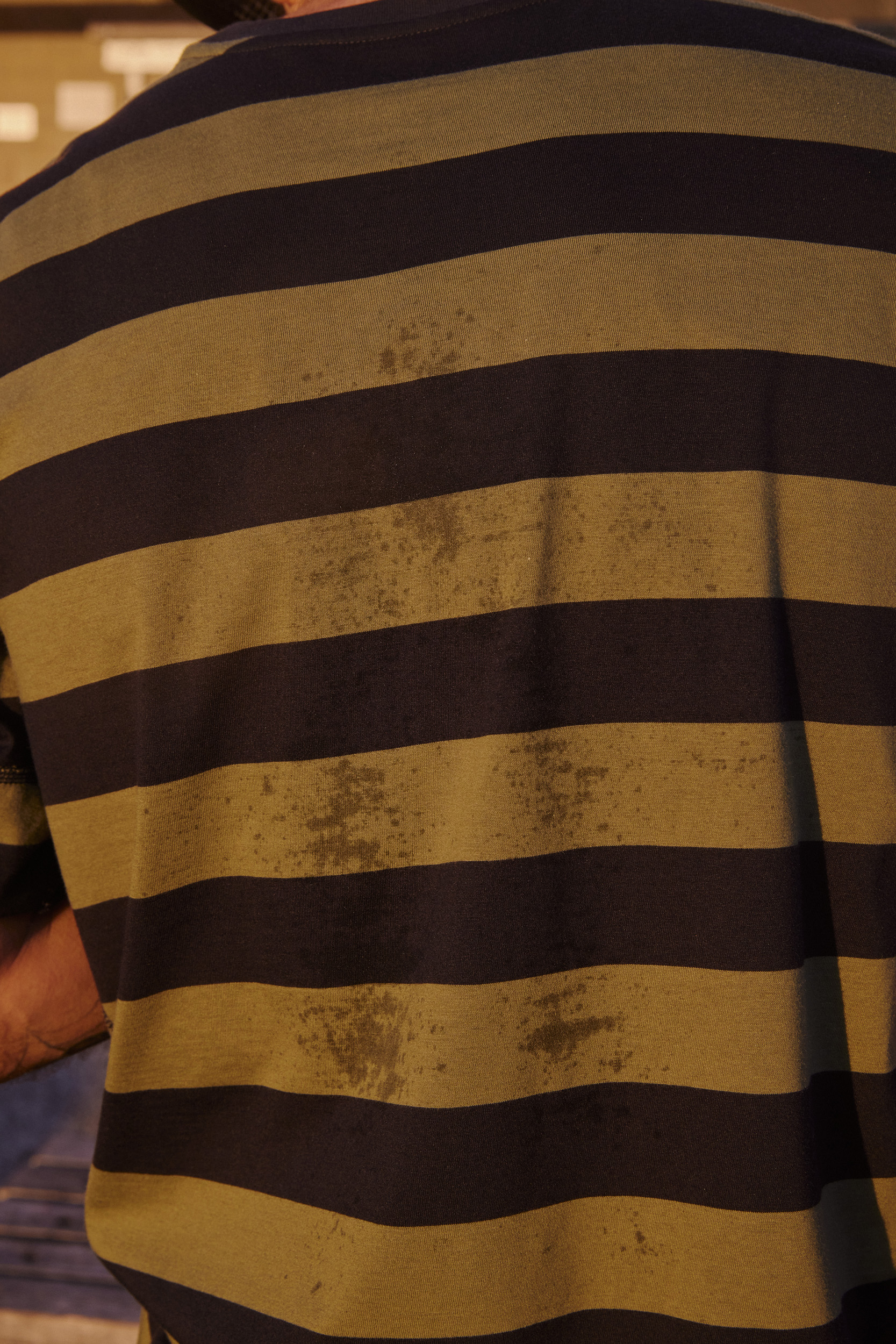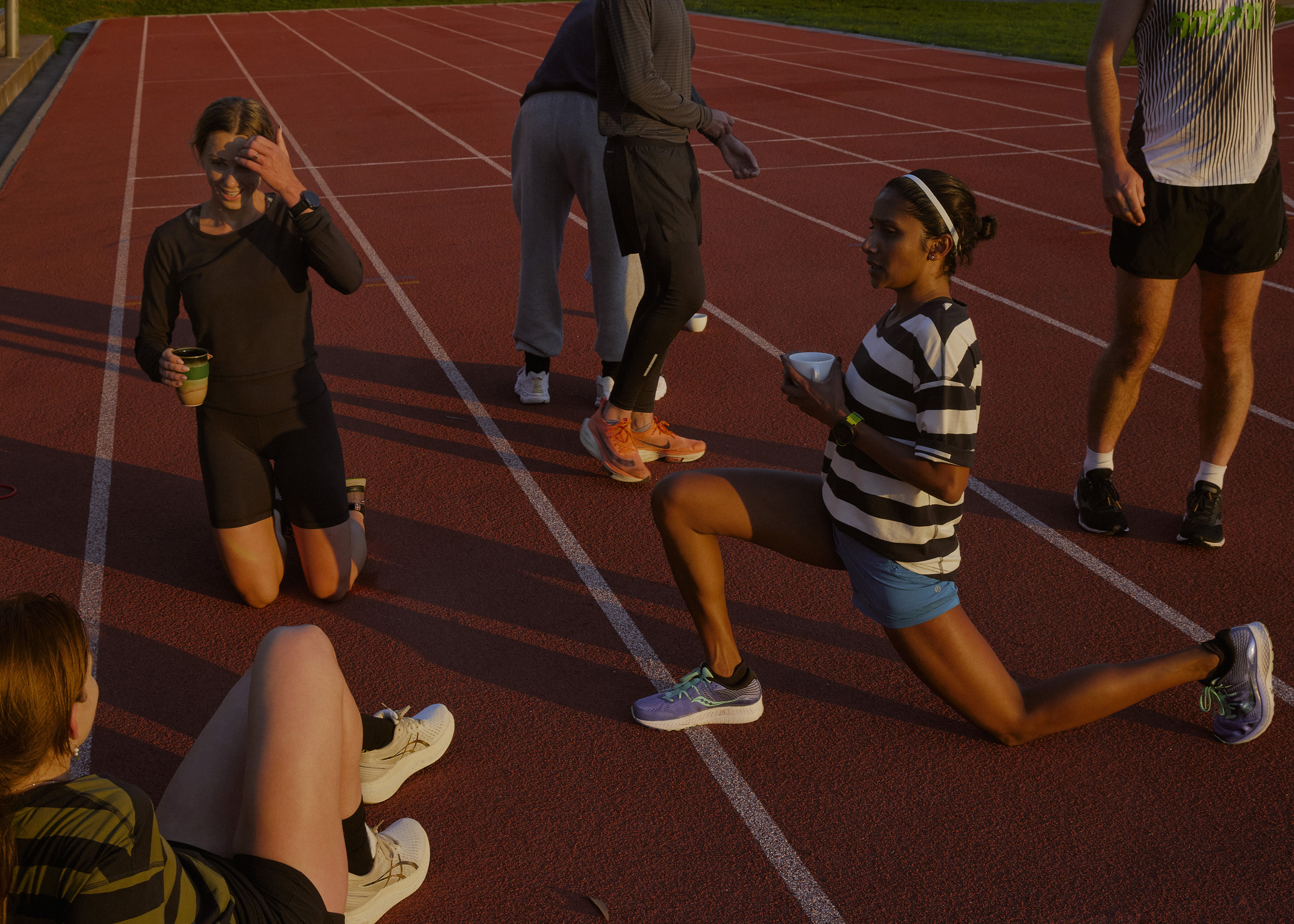
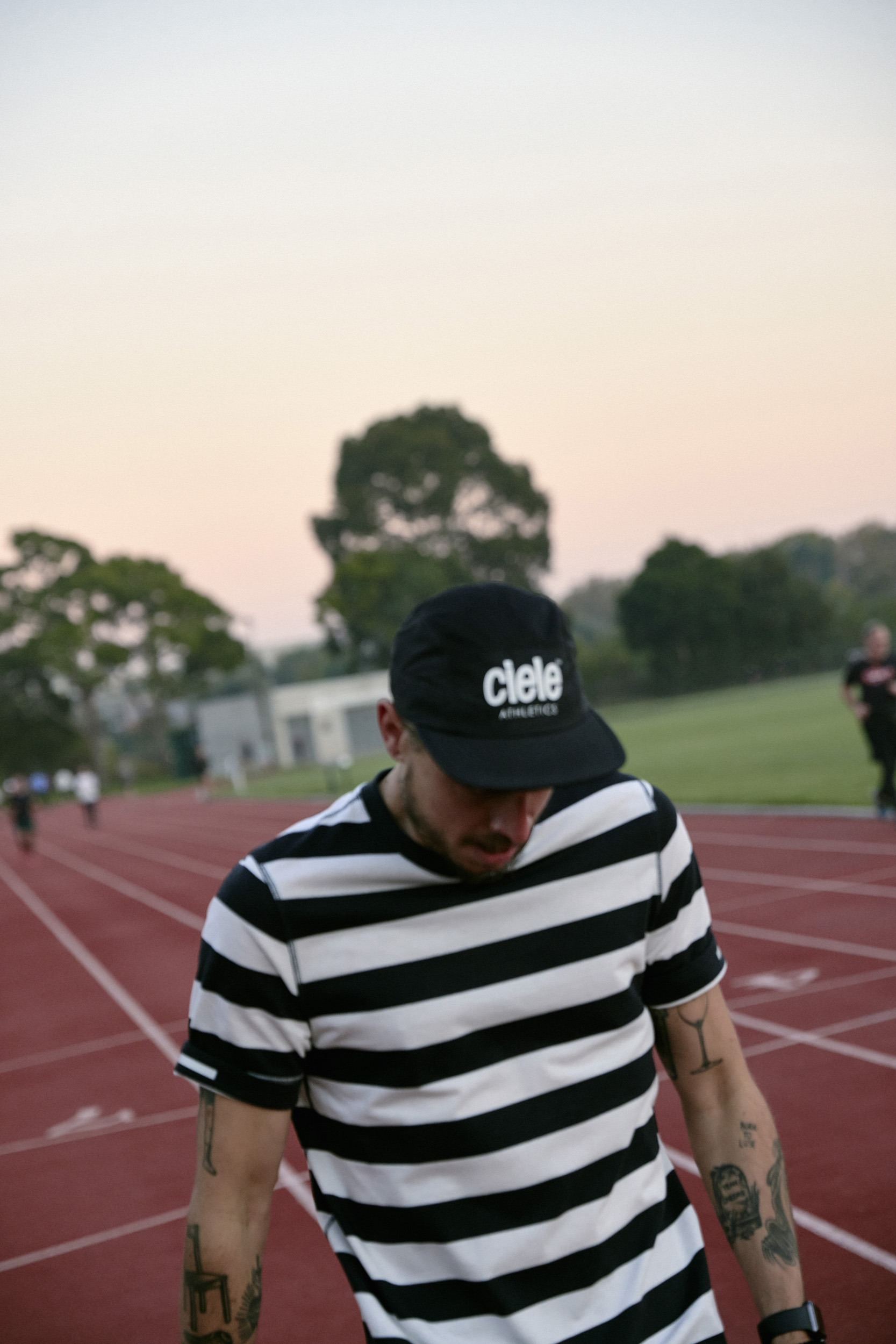
Ciele - On The Move
The running track as a classroom: An alternate model for learning
Words: Good Sport with help from Anzari Atik
Photographs: Ben Clement
When we think of our time in the classroom, our first thoughts tend to drift to the smell of glue sticks, the feel of plastic desks, and a fixation on a clock that is seemingly frozen. Our daydreaming only got us so far, staring out the window at the playgrounds only inflated our lust for the grass, tanbark and concrete. When we did make it outside, we scoffed packets of crisps and segments of oranges, tearing around in groups, prints of bare feet and echoes of chatter trailing behind us. This new freedom was as rich as it was fleeting. Over in a blink, so much had happened with so much still to be done. Chairs are soon again swayed upon with bored, disengaged looks towards the front of the room. The classroom’s four walls again close in, and what appears in our distant imagination is all that reaches true focus.
For the wandering mind, what does learning mean to us when school bells and class schedules are exchanged for heart rates and training plans? When our life experiences and learnings find themselves on a new loop of 400 metres, across six lanes, warm breaths turned cold.

Melbourne-based running crew AM:PM.RC have found themselves willingly, but unknowingly, turning up to ‘class’ every Thursday for the past year and a bit. This class without walls has become an open-source library of untapped learning.
The runners tie their shoes, and their conversations twist and turn. Class subjects. One week it’s architecture, the next, neuroscience. Crash courses in photography with practical assessments on the spot. The runners move between psychology and physiology and then onto farming, sustainability and urban design. Discussions pulled from various backgrounds and experiences surround demanding reps on the track. When the heart rate has returns to rest, a cup of coffee mixes its steam with the evaporating sweat – class is well and truly in session.
![]()
![]()
The runners tie their shoes, and their conversations twist and turn. Class subjects. One week it’s architecture, the next, neuroscience. Crash courses in photography with practical assessments on the spot. The runners move between psychology and physiology and then onto farming, sustainability and urban design. Discussions pulled from various backgrounds and experiences surround demanding reps on the track. When the heart rate has returns to rest, a cup of coffee mixes its steam with the evaporating sweat – class is well and truly in session.


Anzari Atik, runner and neuroscience PhD, spends these early Thursday mornings with AM:PM.RC. “Whenever we exercise or engage in physical activity such as running, that really taxes the brain,”she says. “This increases growth factors, allowing the brain to grow and form new connections. Running, in particular, has been shown to interrupt the natural shrinking of certain regions of the brain, which occurs as we age. One of these regions is the hippocampi (two seahorse-shaped structures on either side of the brain), a major focus centre, which rules over numerous important human skills, such as memory and learning.”
To the running crew, learning doesn’t need to be defined by a physical classroom; any interaction can be a point of learning if you are willing to look beyond the criteria of conventional education. And this 'classroom' teaches all subjects to anyone who wants to learn.
![]()
![]()
To the running crew, learning doesn’t need to be defined by a physical classroom; any interaction can be a point of learning if you are willing to look beyond the criteria of conventional education. And this 'classroom' teaches all subjects to anyone who wants to learn.


The lanes are the only barriers that define where you go. Even still, they are broken and blurred; we move as one. All gas, no gaps. A place to push yourself, be inspired and elevate those around you. Be the teacher and the learner in the same conversation. Listening to each other, and to your body.
Running allows you to enhance the parts of your brain, such as the hippocampi, that are dedicated to focus and habit-building, because you are repeatedly focusing on the breath, your stride, on overcoming pain and the exercise of discipline. In addition to this, running allows you to focus on one task (our brains do not do well with multitasking), which further strengthens those focus centres.
![]()
![]()
Running allows you to enhance the parts of your brain, such as the hippocampi, that are dedicated to focus and habit-building, because you are repeatedly focusing on the breath, your stride, on overcoming pain and the exercise of discipline. In addition to this, running allows you to focus on one task (our brains do not do well with multitasking), which further strengthens those focus centres.


Adding a social aspect to physical activity further strengthens focus centres in the brain. There are numerous studies now on cities in the world known as ‘blue zones’. These are cities where people have been shown to live the longest and healthiest, particularly in terms of brain health. They have the lowest rates of dementia compared to other cities in the world. Aside from a healthy diet, a commonly identified reason for this optimal cognitive function is that these individuals have a healthy social circle, and they engage in physical activity. In essence, learning something new - and doing this with people - affects and improves areas in your brain that prevent memory loss.
![]()

There’s increasing evidence that mastering new skills can trigger pathways in the brain that help maintain cognitive function into old age. This is because behaviours or tasks that are different to what we normally do, where the risk of failure or errors are high, allows us to access neuroplasticity (ability of the neural networks in the brain to change). Errors, failures, stress or pain send signals to the brain, telling it that it’s time to change. So, our capacity for learning in these situations is higher, simply because your brain wants to prevent those traumatic conditions from occurring again. Take track workouts for instance: introducing a new workout or routine, where you are challenged to the point of frustration, but you choose to push through rather than stopping and walking away. In doing so, your brain is triggered into adapting to this new task. This is enhanced by a group track workout where your chances of walking away from the workout are less likely because of that social support network. In addition, short learning bouts (7-30min) in particular, essentially what track workouts are, inspires plasticity.
![]()
![]()


For those that wake to early alarms and make the solo trek down to the track, it’s the environment and the social context after your run uploads to Strava that inspires this plasticity further. Then, it’s the action of the workout that implements it. What before was harder than plastic - physical ability, comfort zones, so-called ‘limits’ - are moulded anew.
![]()
![]()

